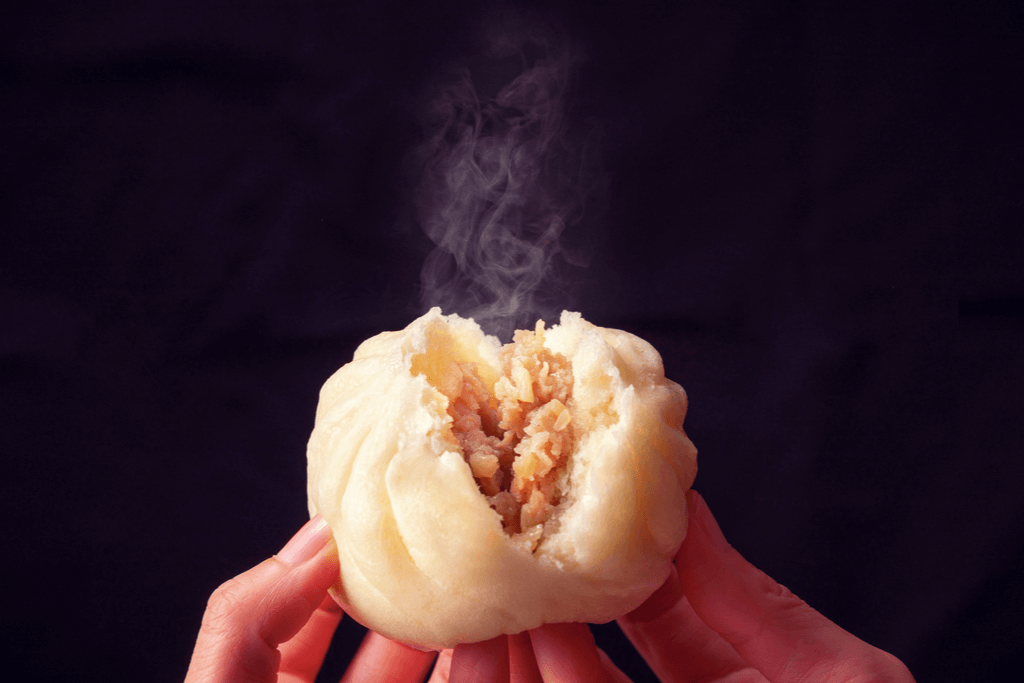Warm, traditional Japanese foods are perfect to eat after the hot, humid Japanese summer has finally passed by. The leaves are changing color, the breeze is getting cooler, and you want something to warm you up as you enjoy the outdoor delights that Japan has to offer in autumn.
Table of Contents
ToggleNabe
Nabe is more commonly referred to as Japanese hot pot. Vegetables, meats and/or seafood are cooked in a dashi broth in an earthenware pot. Vegetables can range from napa cabbage, carrots, daikon radish, leeks, and onions while the protein is usually small, sliced, or minced, depending on the chef’s choice.

It is a comfort food that many Japanese families eat together during autumn and winter. Styles of nabe can vary according to the region. Crab nabe especially is seen as a winter food, while chankonabe is a special type of nabe that sumo wrestlers eat while training.
Oden
Perhaps one of the more common and recognizable traditional Japanese foods, oden is an assortment of different vegetables and proteins that have been simmered at a low heat in a light dashi broth. Classic oden items include daikon or white radish, fish cakes, tofu, eggs, konnyaku or konjac jam. Fancier oden might include seafood like squid and octopus.

The cook might throw in some kelp strips to enhance the flavor of this dish. It can be served communally and can be found in many Japanese convenience stores as the weather gets colder. Many people enjoy oden with a variety of condiments like karashi mustard, miso paste, and togarashi pepper powder for some extra kick.
Want to experience even more traditional Japanese foods this autumn? Check out Sakuraco! Sakuraco sends traditional Japanese tea, sweets and snacks, right to your door every month, so you can have a relaxing snack time at home!
Nikuman
Even though nikuman (steamed meat buns) originated in China, these days, they are a common sight across Japan. As the weather gets colder, there’s nothing quite like a hot, steamy meat bun to have in your hands.

Nikuman are usually made with a succulent pork filling in the center. However, Japan has invented a variety of steamed buns made for the Japanese palate like pizaman or steamed pizza buns and sweet steamed buns that have red bean paste or anko inside. This is one of many traditional Japanese foods with so many different interpretations!
You can find these buns at any convenience store, steaming inside a large display, but the best nikuman come from traditional vendors with thick, heavy wooden steamers that envelop you in steam as the covers are lifted.
Yakiimo
Another hot item off the beaten path, yakiimo are roasted Japanese sweet potatoes. They are recognized for their purple skin and orange insides. When cooked right, they are fluffy, soft, and sweet. Yakiimo were once sold by truck vendors who would advertise their food through their truck’s loudspeakers, which drew many customers.

The trucks were specially equipped with a stone roasting pot that would slowly cook the potatoes over stones. When the yakiimo are broken apart, they release a puff of steam and their sweet, delicious aroma.
These days however, the trucks have become harder to find and yakiimo are more often seen in supermarkets. They are still roasted over stones, although some claim that the modern take on the equipment has taken away the nostalgia factor.
Nikujaga
Nikujaga is a savory meat and potato stew made of meat, potatoes, and various vegetables stewed in soy sauce, sake, mirin, and sugar. It is one of a number of Japanese dishes referred to as “nimono,” which means “simmered things.”

Depending on where you are in Japan, the meat used can differ; beef is common in the Kansai area, while pork is common to the east. Nikujaga is a common dish in Japanese restaurants, but it’s also regarded as a comfort food with many different versions. In fact, the dish is a staple to many Japanese homemaker’s repertoire. The dish was created in the 1800s to mimic western cuisine stews and is often seen as a side dish to a bigger meal.
Shabu-shabu
Another famous Japanese hot pot dish throughout the cold season of Japan is shabu-shabu. The Japanese onomatopoeia “shabu shabu,” means “swish, swish,” and is where the meal gets its name from.
After being prepared, the ingredients are eaten by dipping them in ponzu citrus sauce or creamy sesame sauce. Common ingredients include beef or pork, tofu, onions, carrots, napa cabbage, and mushrooms. All of which are simmered in a kombu seaweed broth.

The ingredients for shabu-shabu are sliced into individual pieces and cooked fondue style, bit by bit. Then the meat and vegetables being lightly swished in broth shortly before eating. This differs from other varieties of nabe where everything is cooked together in one pot before serving.
Sukiyaki
Sukiyaki is a hot pot dish created with soft slices of beef and vegetables that are cooked in a sweet soy sauce broth. It is traditionally served in the winter but can be enjoyed throughout the year due to its popularity. This dish is cooked in a cast iron pot, and is one of the more famous traditional Japanese foods!

The protein is usually cooked in beef fat before adding vegetables and other ingredients. The meal frequently includes grilled tofu, shiitake mushrooms, leeks, onions, and shirataki noodles. As the dish is consumed, the cooked beef and other components are dipped into beaten raw egg yolks, which produces a sweet, creamy sauce. Sukiyaki can be prepared on a budget, but more expensive varieties feature delicious wagyu beef for a richer flavor.
Ramen
Noodles, soup, and toppings that just enhance the experience of it all. Is there anything better than ramen in the winter? Recently, there have been a bunch of Japanese food channels popping up on YouTube and they’ve been showcasing some of the best ramen that you can find in yatai or Japanese street food stalls.

When it’s cold and you just want to warm up, what better way to do it than with a bowl of delicious ramen? Thick noodles or thin? Rich soup or light? Chashu, half-boiled egg, bamboo shoots, and green onions? Is there anything more enticing on a cool autumn night?
Have you tried any of these foods before? Which one warmed you up the most? Let us know in the comments below!










